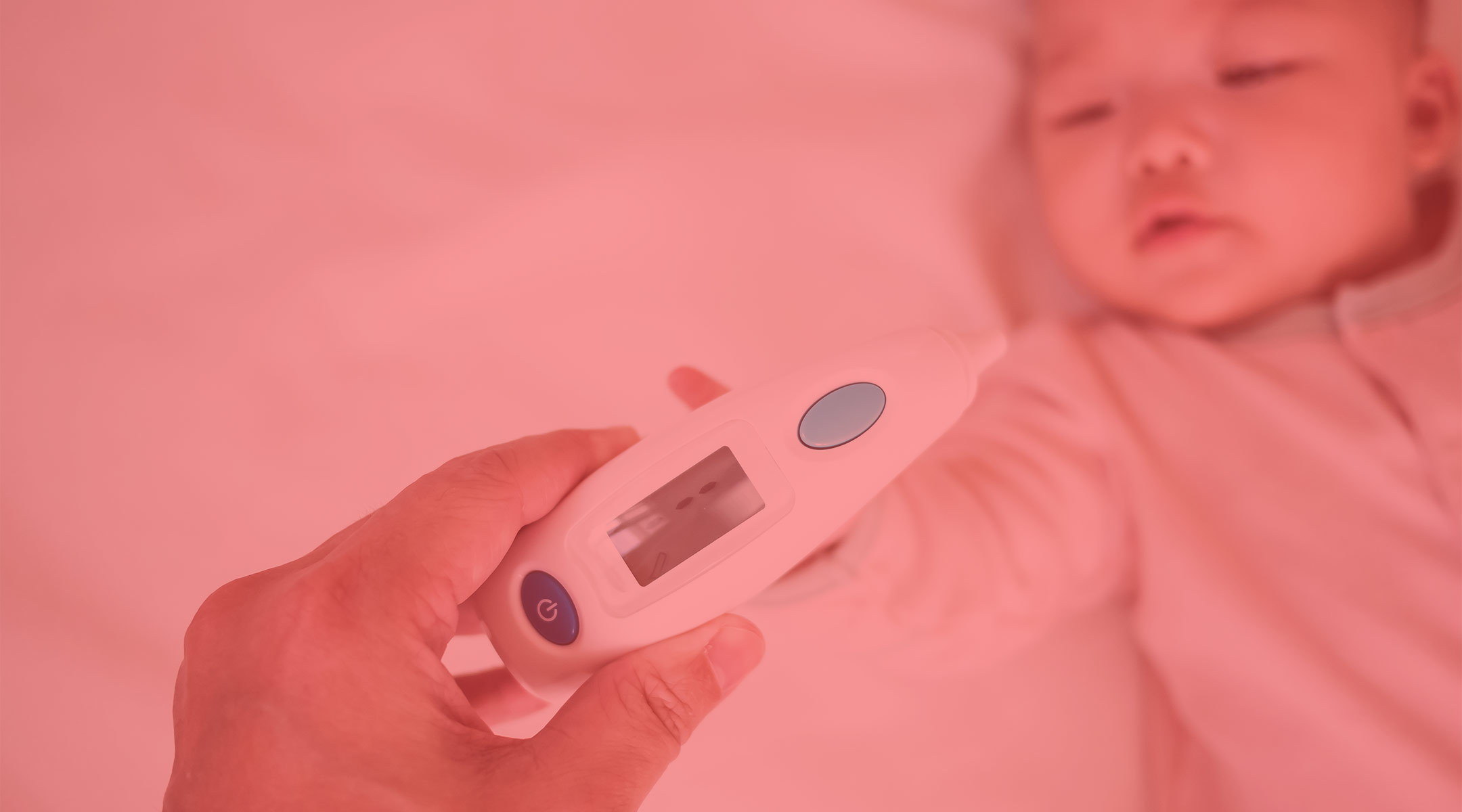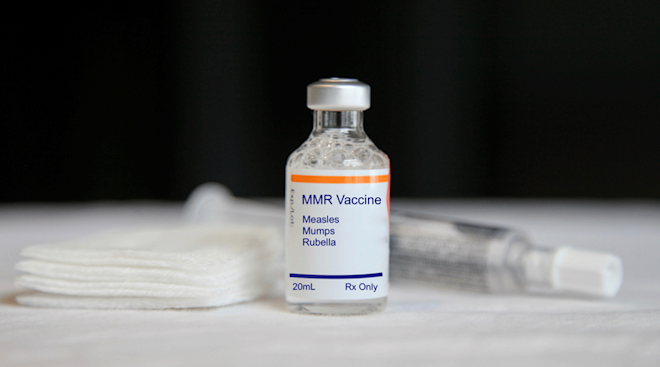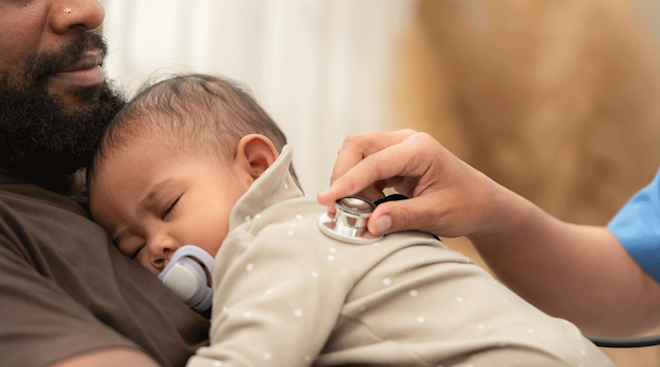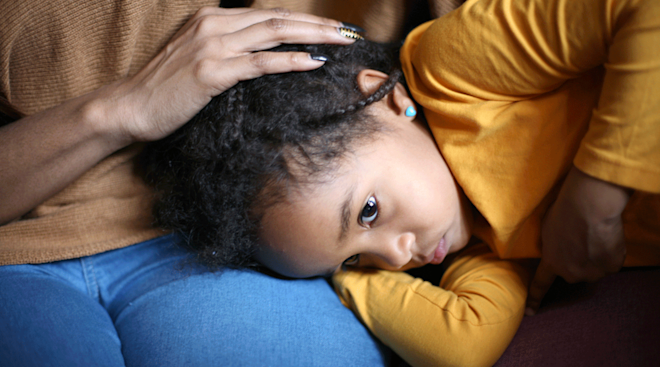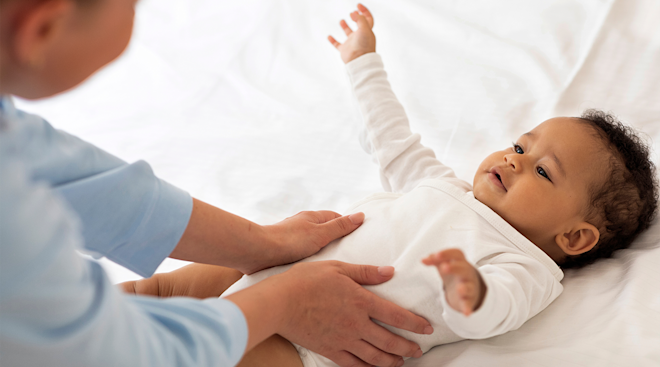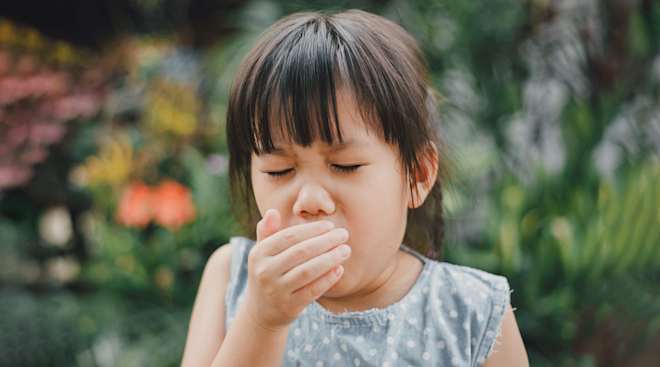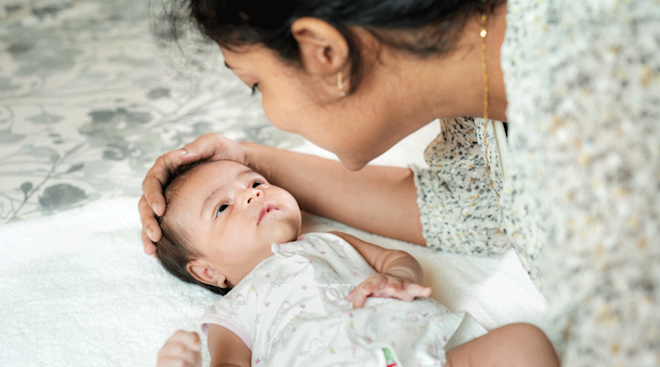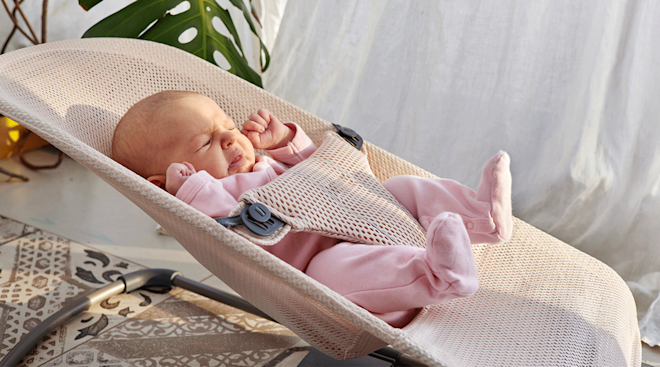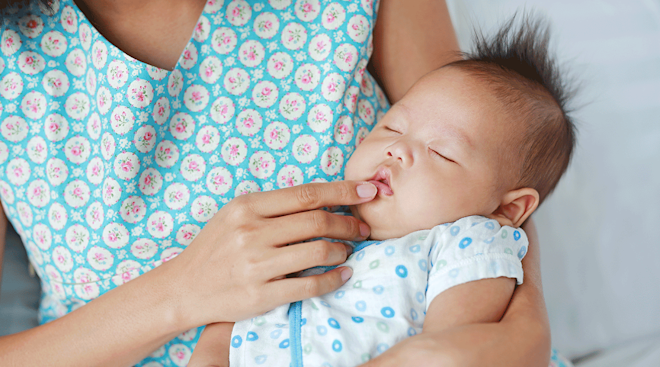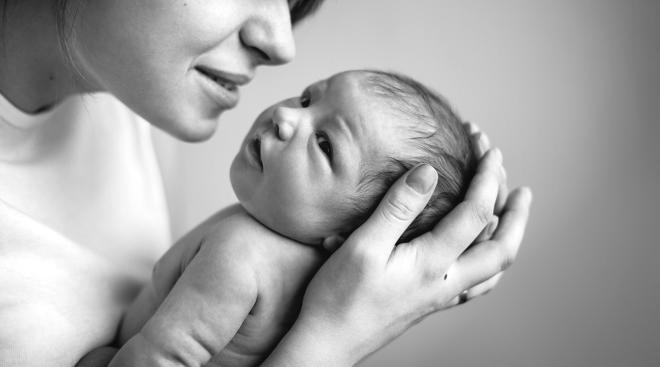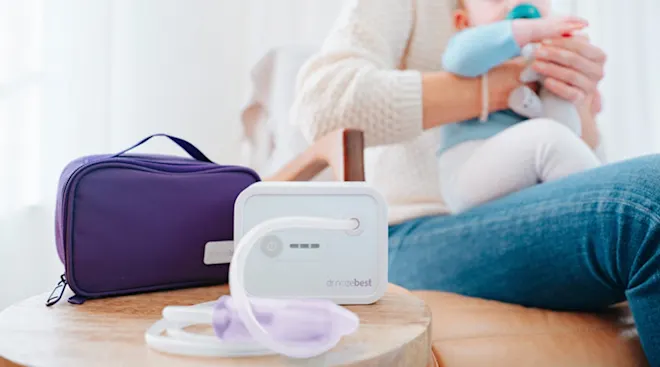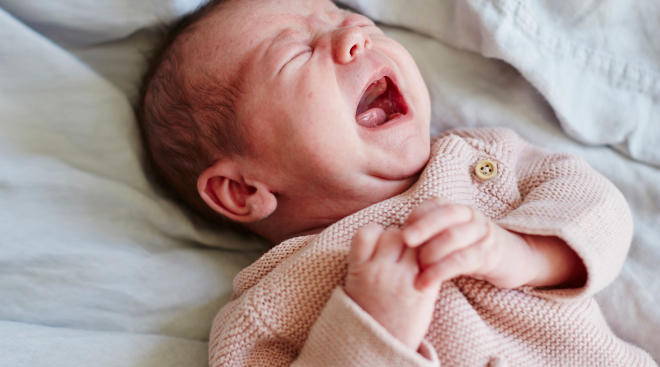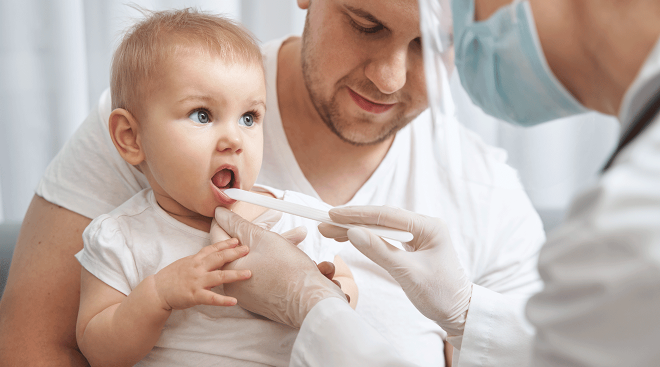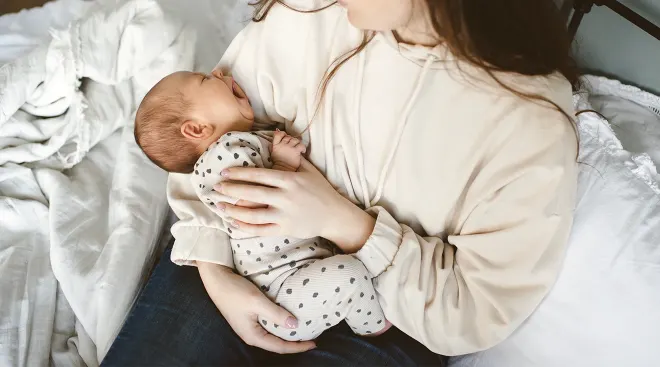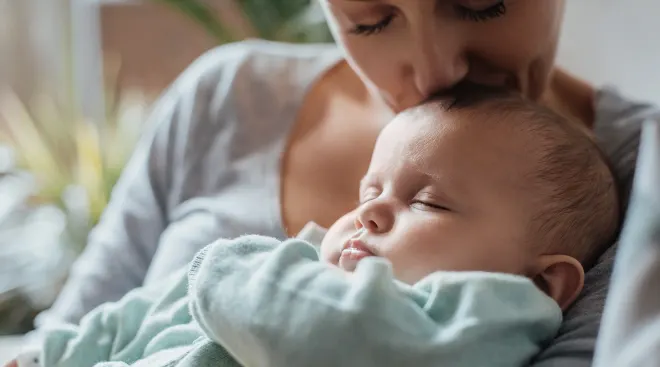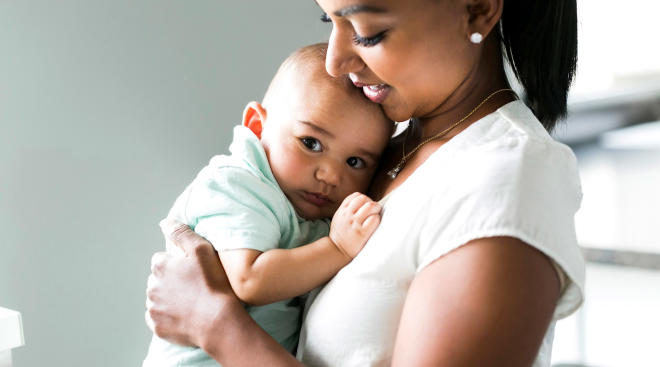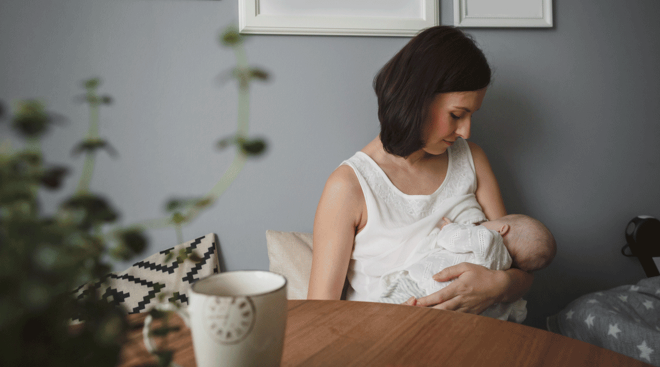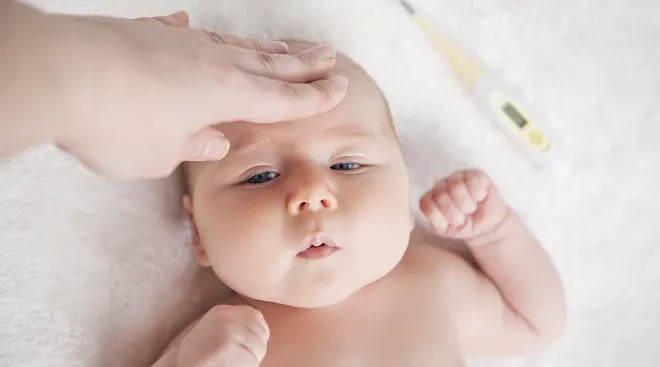What to Know About Measles in Babies
The year 2019 saw a big measles outbreak that hit New York and extended to more than 30 states across the country, prompting pediatricians to remind parents that measles is no joke. “A lot of people think it’s just a mild fever, rash and infection,” says Scott Krugman, MD, vice chair of the department of pediatrics at Herman & Walter Samuelson Children’s Hospital at Sinai Hospital in Baltimore. “But a significant number of kids who get it get complications like pneumonia and encephalitis—aka swelling of the brain.” So how do people contract measles, and how can you keep your little one safe? Read on to learn more about measles in babies.
Measles, also known as rubeola, is a potentially fatal viral disease. Its hallmark symptom is a red, blotchy rash that starts on the face and spreads downward over the body. Measles is one of the most contagious diseases around and proliferates quickly: The virus can live as droplets in the air or on surfaces for up to two hours. You and baby can contract measles by breathing in contaminated air, touching a tainted surface or via person-to-person contact.
Measles in babies can be deadly; it kills more than 100,000 people a year worldwide, most under the age of 5. “‘A mild case of measles’ doesn’t translate—it attacks all the cells in your body; it bothers your heart, lungs, brain and liver,” says Sharon Nachman, MD, division chief of pediatric infectious diseases at Stony Brook Children’s Hospital. “Measles also has a secret surprise: 1 out of 500 people who get it is predestined down the road to get subacute sclerosing panencephalitis (SSPE), a very bad brain outcome that’s not fixable—it’s lethal.”
Up until the early 1960s, nearly every child in the US caught measles by the time they were 15 years old—a total of between 3 and 4 million people were infected annually. But by 1981, thanks to the measles vaccine that was developed in 1968, the number of reported cases had dropped 80 percent compared with the previous year. After a host of doctors and other experts recommended that a second dose of measles vaccine should be administered to all children after a small outbreak occurred in 1989, the Centers for Disease Control and Prevention (CDC) declared that measles had been eliminated in the US in 2000.
Since then, two issues have caused small flare-ups over the years: an increase in the number of travelers who get measles abroad and bring it back to the US, and the spreading of the disease in communities with pockets of unvaccinated people—places where fear of vaccines have taken root. “No one in a generation has grown up in an era of measles, and if you haven’t seen a case, you’re not afraid of the disease,” says Krugman. “When you have people promoting disinformation through social media and other outlets describing harms of the vaccination that don’t exist, that fear makes a parent decide that ‘I’m more scared of the vaccine than the disease.’”
In 2019, these factors came together in a perfect storm: About 1,250 individual cases of measles were confirmed in the US, the largest eruption since 1992. More than 75 percent of the cases in 31 states were linked to outbreaks in New York, where large bands of people in places like Brooklyn and Rockland County weren’t vaccinated against measles. Over the period from January 2019 through October, 119 of the people who got the measles were hospitalized and 61 reported having complications.
Legislators in New York reacted quickly, tightening school vaccination laws to make it tougher for parents to opt out of shots because of personal beliefs. California did something similar when a few measles-infected visitors to Disneyland over the new year in 2015 caused a small outbreak that was fueled by low vaccination rates. And while many states like Washington are following suit—debating to eliminate such exemptions and in some cases cracking down on suspect medical exemptions—only California, Maine, Mississippi, New York and West Virginia do not allow any personal or religious exceptions to getting vaccinated.
Early signs of measles in babies arrive as a trifecta: coughing, runny nose and conjunctivitis (aka red, swollen eyes). A high fever is also common, followed by mouth sores and the telltale rash, which features spots that flow into each other. “Measles children are very miserable,” says Nachman, noting there’s no way to anticipate or ward off complications that can arise from the measles, like ear infections, pneumonia or encephalitis.
The measles incubation period lasts about 10 to 14 days, during which time you probably won’t see any signs of sickness. After that, early measles symptoms in babies resemble those of a mild respiratory illness and usually don’t last longer than a few days. It’s then that the fever and measles rash set in, showing in the face first before spreading to the arms, trunk and legs.
Here’s the thing: There is no cure for measles in babies and no way to treat it except to give your little one plenty of rest. “Your immune system has to take care of itself, and sometimes it does, sometimes it doesn’t,” says Nachman. Your pediatrician will prescribe antibiotics only to treat secondary ailments, like ear infections, which impact one in 10 children who get the measles. One out of 20 kids with measles will get pneumonia—the most common cause of death from measles in young kids—and one in 1,000 will come down with encephalitis.
The only true safeguard against measles is two doses of the live MMR vaccine, which stands for Measles, Mumps and Rubella. One dose is 93 percent effective against preventing measles; having two doses ratchets up your coverage to 97 percent. Caregivers usually give the first dose to children between 12 and 15 months and then a second before they turn age 6, although timing doesn’t really matter. “In an outbreak situation you can get vaccinated as young as six months,” says Krugman. Babies can receive the second dose early, as long as it’s 28 days after the first.
While measles vaccine side effects have become a hot-button issue over the past decade, the CDC contends that the injections are safe and necessary as the only way to prevent a measles epidemic in the US. Common measles vaccine side effects include tenderness where the needle went in and a low-grade fever; more unusual is a skin rash that appears a week or so after the injection, which is your child’s body’s way of fighting off the weakened infection.
“We might be escaping becoming an endemic country when it comes to measles,” says Krugman. “In theory, measles is a disease that can be eliminated from the face of the earth and would no longer exist if everyone got vaccinated.”
Published November 2019
Please note: The Bump and the materials and information it contains are not intended to, and do not constitute, medical or other health advice or diagnosis and should not be used as such. You should always consult with a qualified physician or health professional about your specific circumstances.
Plus, more from The Bump:
Navigate forward to interact with the calendar and select a date. Press the question mark key to get the keyboard shortcuts for changing dates.
































